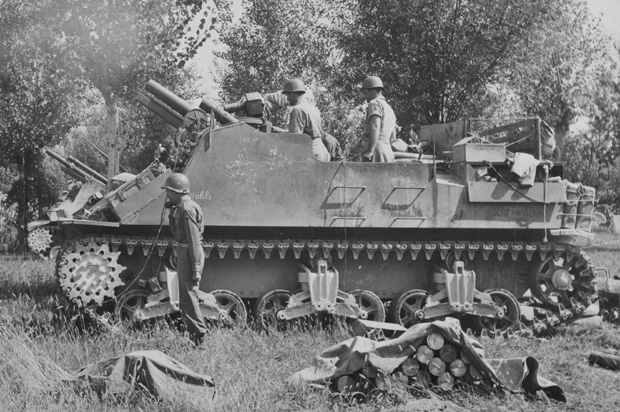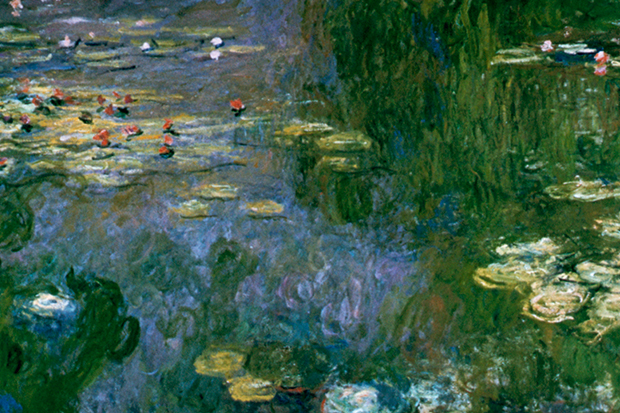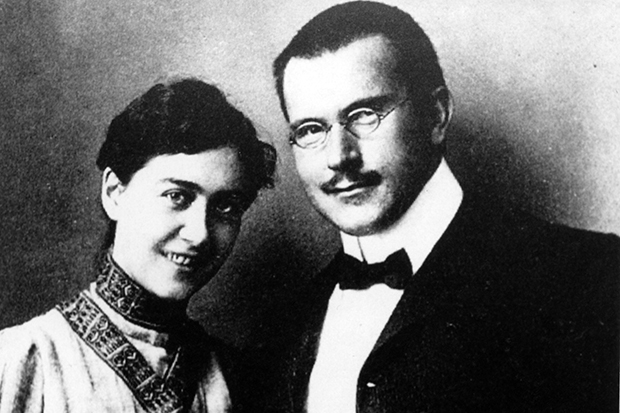When Rome fell to the Allies on 5 June 1944 General Harold Alexander, commander of the 15th Army, calculated that he would need just 12 weeks to reach the river Po and liberate Italy from the Germans. It took him nearly a year. Christian Jennings’s new book chronicles the months of heavy fighting, the advances and retreats and the enormous losses on both sides as the Allied forces stalled, and the enemy attacked.
It was never going to be easy. Once the Italians signed the armistice with the Allies on 8 September 1943, turning their backs on their former Axis partners, the Germans moved quickly to occupy the whole of Italy. While the British and the Americans were arguing over their policy towards the defeated Italians, Hitler dispatched nine divisions down through the Brenner Pass. Rome collapsed and Field Marshal Albert Kesselring, in charge of the German Army Command South, put in place the first of a series of defensive lines to stop the Allies from breaking through into central Europe. The most formidable of these was the Gothic Line, stretching from La Spezia on the Mediterranean coast to Rimini on the Adriatic. It was, as Jennings writes, one of the ‘biggest, best constructed man-made and natural defensive positions of the second world war’.
Two hundred miles long, the Gothic Line made the most of every hill, ravine and river, and it was easily dominated by the high Apennines. Along the crests of the mountains, Kesselring positioned his mortars, tanks and machine guns; in the valleys, he laid mines, placed anti-tank guns and erected barbed-wire fences. More small mines were sown over roads and tracks, in verges and fields. And there, in the late summer of 1944, until the spring of 1945, the Allies stopped and the Germans dug in. As a 17-year-old German paratrooper wrote to his mother, he had been told that he was defending ‘all that was right and good about Germany’. The many cemeteries that stretch across the Line, of Americans, British, Canadians, Brazilians, Rhodesians, Poles, Nepalese and French, reflect the terrible casualties suffered.
The Italian campaign, with its twists and turns in Allied and German policy, its secret deals and meetings, its many competing factions, from Mussolini’s Fascist forces to General Badoglio’s impotent government, is not simple to describe. Jennings navigates his way deftly through, with the help of a number of individual Allied and Axis characters. There is Herbert Kappler, a former electrician from Stuttgart, head of the Gestapo in Rome, Daniel Inouye, a Japanese-American sniper, and Arrigo Paladini, a partisan tortured by the Germans. Accompanying these men as they fight their way northwards from the landings at Salerno and Anzio, he brings them into play in cleverly orchestrated skirmishes and battles.
Not the least complicated aspect of the Italian campaign was the partisans’ role, over whose usefulness the British and Americans disagreed. On the one hand, they were badly needed as fighters behind the lines, to provide information to the secret services and to protect the industrial infrastructure from German sabotage. On the other, the many communists among them posed a threat to British plans for a friendly Italy once the country was liberated.
And liberation itself was not a pretty affair. As the Germans retreated, and the partisans grew in strength, so reprisals multiplied. Jennings describes in detail one of the worst of the German massacres, in the village of Marzabotta, not far from Bologna. Here, early in September 1944, SS soldiers took five days to clear 50 square kilometres of mountainside. Of the 1,835 people killed, 250 were children and five were Catholic priests. Not surprisingly, perhaps, when the northern cities were finally liberated, the partisans took their revenge. Controlling them, noted a British radio operator, was like King Canute trying to stem the tide.
Jennings’s book is military history at its most engaging — men set in motion and battles fought against the magnificent backdrop of the Apennines. More daunting terrain, however, is that described by Neal Bascomb, whose characters survived for weeks on end on Norway’s frozen plateaux. The Winter Fortress is the story of how successive groups of Norwegian commandos, trained and equipped by the British Special Operations Executive, sabotaged the Vemork hydroelectric plant, producer of heavy water, essential for the nuclear bomb the Germans were racing to make.
Perched on a rock overhanging a gorge, the plant could only be reached by a 75-foot closely guarded suspension bridge; around it were mines, searchlights and machine guns. A first team of saboteurs, sent by glider, crashed: the survivors were tortured and executed. A second mission succeeded, as did a third, which blew up a ferry transporting heavy water to Germany. At times, The Winter Fortress reads with the pace of a thriller.
Both Jennings and Bascomb are good at narrative tension, carrying their stories forward at speed, undeterred by the complexity of their subjects or the vast range of their characters. But what emerges most strongly is the admiration both share for the valour of the ordinary soldiers they write about, battling not only military might but exhaustion, illness, hunger, injuries, rain, sleet, blizzards, muddy swamps and torture. Over and above the stories they tell, these are books about the hell of war.
The post Twists and turns of the Italian campaign appeared first on The Spectator.
Got something to add? Join the discussion and comment below.
Get 10 issues for just $10
Subscribe to The Spectator Australia today for the next 10 magazine issues, plus full online access, for just $10.
You might disagree with half of it, but you’ll enjoy reading all of it. Try your first month for free, then just $2 a week for the remainder of your first year.














Comments
Don't miss out
Join the conversation with other Spectator Australia readers. Subscribe to leave a comment.
SUBSCRIBEAlready a subscriber? Log in